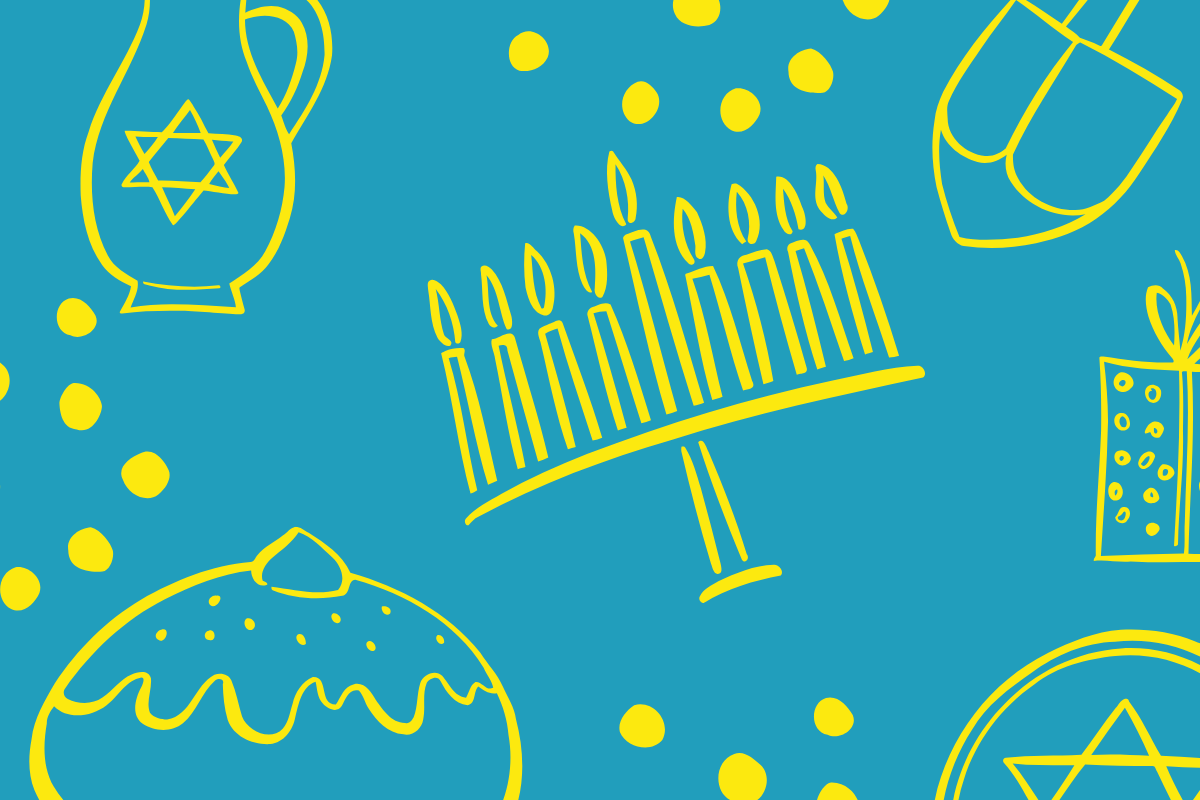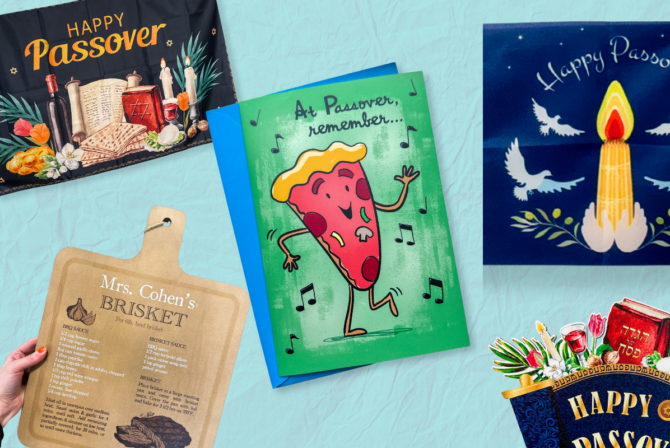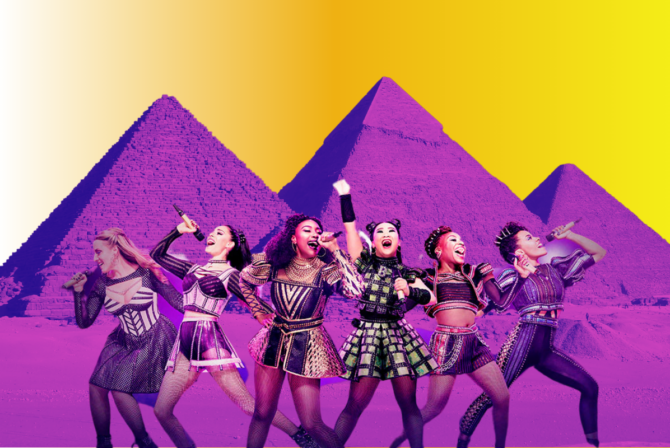Recently, my son asked if I could come into his classroom to talk about Hanukkah. That day, he had learned about Diwali at school and ran out the door bursting with excitement. He loved hearing about a new holiday and wanted to share his own with his kindergarten friends.
My first thought was to brush off this request for all the usual reasons. December is such a busy season. My memory of the Hanukkah story is foggy at best. I’m not especially crafty. I don’t know if there are any other Jewish families in the class.
The last reason stopped me in my mental tracks. This is my first year with both kids in elementary school. We are now fully out of our bubble of Jewish preschool, where everyone celebrates the same holidays. Rather than feeling singled out, my son was filled with so much Jewish pride that he longed to teach others about his own traditions. I wanted to feel this, too. While talking to 20 5-year-olds about latkes isn’t groundbreaking, sharing positive perceptions of Judaism in any way feels particularly needed right now.
So, I got to work studying up on all things Hanukkah and have compiled some talking points, activity ideas and resources. If you’ve been tasked with sharing the holiday at school, or are thinking about suggesting it, here’s a practical guide to help you head to class with confidence.
Start With Hanukkah Basics
Kick off your session with some holiday basics, as kids may be coming in with varying levels of familiarity. In case it’s been a while since your last reading of the Hanukkah story, here’s a very high-level overview:
Hanukkah is a holiday that Jewish people celebrate around the month of December. It honors freedom, remembering a time long ago when the Jews returned to their temple after it had been destroyed by a king who did not want anyone following traditions that were different from his own. As the story goes, they went to light a menorah (a candle holder with several branches), but only had enough oil for one night. Unexpectedly, it lasted for eight nights, enough time to get more oil. Hanukkah, also called the Festival of Lights, lasts for eight days to celebrate this miracle.
Share Home Rituals
Give students an idea of what celebrating Hanukkah looks like at home:
Lighting the menorah
Bring in a menorah and demonstrate how candles are added each night, using the shamash (helper candle) to light them. Kids might be fascinated to learn just how many candles it takes to cover all eight days. Each menorah uses 44, and many families light more than one! As flames are not usually allowed in school, skip the actual lighting or bring an electric version.
Playing dreidel
Pass around a dreidel, or hand some out for each kid to take home a piece of Hanukkah. Explain that the letters stand for “nes gadol haya sham,” Hebrew for “a great miracle happened there.” (Fun fact: Dreidels are actually slightly different in Israel, as their letters stand for “a great miracle happened here.”) This affordable pack even comes with a game instruction card to help you talk through the rules.
Eating traditional foods
Food has a unique ability to bring cultures together at any age. Who doesn’t like to talk about (or eat) delicious treats? Here’s a reminder about some Hanukkah favorites:
Latkes are fried potato pancakes, typically served with applesauce or sour cream. To get interactive, take a vote on preferred toppings (though I bet I can guess the winner in any class). We eat fried foods to remind us of the oil that miraculously lasted eight days.
Another food fried in oil, sufganiyot are dough balls filled with jam, like a jelly doughnut. If food is allowed in class, Dunkin’ Donuts jelly munchkins make for a bite-sized option. In fact, the company prepares their stores to sell “thousands and thousands of jelly donuts” around Hanukkah each year.
Gelt, chocolate coins wrapped in gold foil, are usually given as gifts to children or used to play dreidel. The coins represent a custom of giving to others. Available at many grocery stores, gelt is another easy treat to bring in or send home with students, if allowed.
Add An Activity
Once the class is up-to-speed on the origins and rituals of Hanukkah, bring the holiday to life with a craft, game or story:
Use easy printouts
To keep it simple, hand out Hanukkah coloring or activity pages. PJ Library offers a printables hub with lots of options for any age, from dreidel coloring to fill-in-the-blank stories.
Make beeswax candles
Quick, easy and relatively mess-free, have children roll their own colorful beeswax candles. This set comes in packs of 24 or 48.
Create paper menorahs
If you don’t mind a little prep work, craft these paper plate menorahs. Start with yellow plates to skip the painting step. Cut plates and construction paper candles ahead of time, so kids are ready to choose their favorite colors and go to town with a glue stick. Add some optional sparkle with glitter washi tape.
Play a game of dreidel
Older kids, especially, may enjoy getting into the Hanukkah gaming spirit. Split students into groups of 3-5 and walk them through the rules of the game. In addition to dreidels, be sure to bring coins, gelt or other small items.
Read a Hanukkah book
If you have time to spare (or would rather read than craft), finish with a book. Gather the class for story time or have them listen while they munch on treats. My personal favorite is “Hanukkah Bear,” a heartwarming and humorous story about an old woman who accidentally shares the holiday with an unusual guest. For more recommendations, check out PJ Library’s Great Big List of Children’s Books About Hanukkah.








